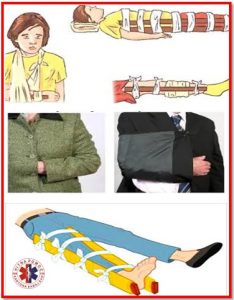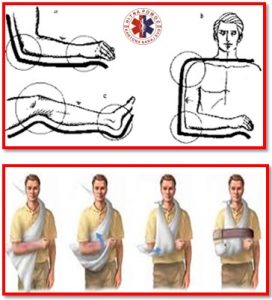IMMOBILIZATION
IMMOBILIZATION
Immobilization is the prevention of mobility of the part of the body in which we suspect that a fracture has occurred, ie. bone fractures. In this way, the injured part of the body is put to rest, and the goal is to prevent the injury from getting worse and additional pain from occurring.
Immobilization is used for fractures or suspected bone fractures, extensive wounds or burns, frostbite, snake bites, and limb bruises.

Types of immobilization
We distinguish two types of immobilization: transport and definitive.
Transport immobilization protects the injured immediately after injury and during transport. It is limited in time. It is done with the funds that are currently available.
Definitive immobilization is used in health care institutions as part of non-surgical treatment and after surgical treatment, depending on the type of injury.
Medical teams have factory-produced splints, collars and airbags to immobilize limbs and spine. In the absence of factory equipment, planks, a triangular scarf and other items that can be found on the spot (handy tools) can be used, depending on the resourcefulness of the person providing first aid.

Principles of immobilization
When immobilizing, we most often use the rule of "two" - two people provide assistance, two adjacent healthy joints are immobilized, and the immobilizer is attached in two places - above and below the injured part of the body. The injured part of the arm or leg and two adjacent joints are placed at rest.
During immobilization, it is important to note that no forced adjustment of the joint or injured part of the body is performed. If resistance or pain is encountered during immobilization, the injured limb is immobilized in the position in which it was found.
The leg is immobilized in the extended position (the injured person must lie down), and the arm is folded at the elbow and pressed against the body. The hand is immobilized with the fingers slightly bent. Caution is especially needed when a spinal cord injury is suspected. Spinal cord injury can occur during the injury itself, but also during the transport of the injured person. Spinal cord injury is suspected in traffic accidents, falls from heights, fights, jumping into water, falling objects on the head. If a spinal cord injury is suspected, the patient should not be moved unnecessarily.
